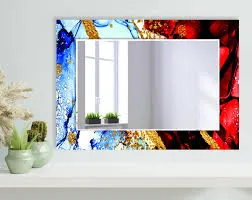

The Art and Science of Float Glass Making
Float glass is a crucial material in modern construction and architecture, widely used for windows, facades, and numerous other applications. The process of making float glass, developed in the mid-20th century, represents a significant technological advancement in the glass industry. This article explores the intricacies of float glass production, its benefits, and its applications.
Origins and Development
The float glass process was invented by Sir Alastair Pilkington in 1952. Prior to this innovation, glass was produced using techniques that resulted in a variety of thicknesses and uneven surfaces, making it unsuitable for many applications. Pilkington’s method revolutionized the industry by introducing a way to create flat glass that is uniform in thickness and has a smooth surface, which is essential for modern architectural needs.
The Float Glass Process
The float glass-making process involves several key steps
1. Batch Preparation The first stage in glass production is preparing the raw materials. The primary components are silica sand, soda ash, and limestone. These materials are mixed in precise proportions and sometimes include various additives to enhance the properties of the glass.
2. Melting The batch is then heated in a furnace at temperatures exceeding 1,500 degrees Celsius (2,732 degrees Fahrenheit). This intense heat causes the raw materials to melt and form molten glass.
3. Floating The molten glass is poured onto a bath of molten tin. Because glass is less dense than tin, it floats on the surface, creating a smooth, flat sheet. This unique feature of the float process allows for the production of glass with uniform thickness and excellent surface quality.
4. Annealing After floating, the glass sheet passes through a cooling process called annealing. It is gradually cooled in an annealing lehr, which helps relieve internal stresses caused by the rapid cooling of the glass surface while the interior remains hotter.
5. Cutting and Finishing Once cooled, the glass is cut into sheets of desired sizes. These sheets can then undergo various finishing processes, including polishing and coating, to enhance their strength, safety, and aesthetic qualities.

Advantages of Float Glass
Float glass has several advantages over traditional glass-making techniques. Its uniformity in thickness allows for better energy efficiency in buildings, as it can be manufactured in large sheets that reduce the number of seams, minimizing potential points of air leakage. Furthermore, the smooth surface of float glass is ideal for applications requiring high optical clarity, such as display cases, mirrors, and high-performance windows.
Additionally, float glass can be treated for various functional properties. For example, low-emissivity (low-E) coatings improve thermal performance by reflecting heat back into buildings while allowing natural light to pass through. Tinted float glass can reduce glare and heat gain, making it ideal for large buildings in sunny climates.
Environmental Considerations
As with any manufacturing process, the production of float glass raises environmental concerns. However, advancements in technology have led to more energy-efficient furnaces and processes that reduce emissions. Moreover, glass is a recyclable material, and many companies now incorporate recycled glass into their production lines, further minimizing their environmental footprint.
Applications
Float glass is used in a myriad of applications across multiple industries. In the construction sector, it is essential for windows, facades, glass doors, and partitions. In automotive manufacturing, float glass provides the windshields and windows that not only contribute to the vehicle’s aesthetics but also ensure safety and durability.
In interior design, float glass is favored for its clarity and minimal distortion, making it ideal for tabletops, mirrors, and decorative elements. Furthermore, the rise of smart glass technology is expanding the applications of float glass, integrating functionality such as switching from transparent to opaque to enhance privacy or control solar heat gain.
Conclusion
Float glass production is a remarkable blend of art and science, showcasing human ingenuity in material engineering. Its uniformity, versatility, and aesthetic appeal have made it an indispensable component in modern architecture and design. As technology continues to evolve, the future of float glass promises further innovations that will enhance its sustainability and functionality, underscoring its vital role in the built environment.